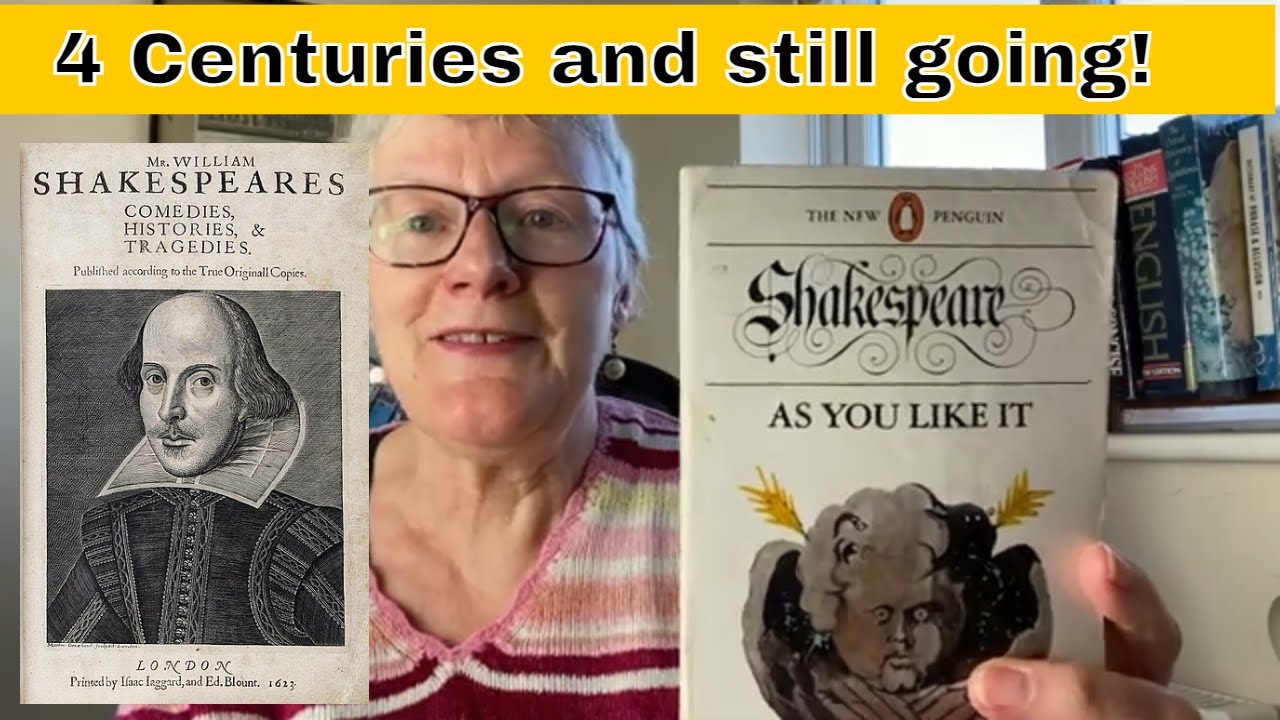
Making a Case for Shakespeare 400 Years After His Death
Making a case for Shakespeare 400 years after his death isn’t about proving his genius – that’s already a given. It’s about exploring the enduring power of his words, characters, and themes, which continue to resonate deeply with audiences across centuries. This isn’t just about dusty old books; it’s about the ways Shakespeare’s influence shapes modern literature, film, theater, and even our everyday language.
We’ll delve into the evolution of Shakespearean interpretation, from the early modern period to contemporary critical lenses, and examine how his work continues to inspire and challenge us today.
From the timeless tragedy of Hamlet to the witty banter of Much Ado About Nothing, Shakespeare’s plays offer a rich tapestry of human experience. We’ll unpack his unique language, the enduring impact of his neologisms, and the surprising ways his phrases still pepper our conversations. We’ll also look at how his characters, both archetypal and deeply individual, continue to fascinate and inspire, offering a mirror to our own complexities.
The Evolution of Shakespearean Interpretation

Shakespeare’s works, initially received with widespread popular acclaim, have undergone a fascinating and complex evolution of critical interpretation over the past four centuries. Early interpretations were often shaped by prevailing social and religious norms, leading to readings that emphasized moral lessons and the inherent order of the universe. However, as societal values and critical methodologies shifted, so too did our understanding of the Bard’s genius.
The initial centuries saw Shakespeare largely viewed through a lens of moral instruction. Plays were analyzed for their didactic potential, highlighting the rewards of virtue and the consequences of vice. This approach, while neglecting the complexities of the plays, reflected the societal emphasis on order and religious piety. Later, the Romantic era brought a new perspective, emphasizing emotion, imagination, and the individual genius of the playwright.
Shakespeare was celebrated as a master of human psychology, and his characters became objects of intense emotional identification.
The Rise of New Criticism and Beyond
The 20th century witnessed a dramatic shift in Shakespearean scholarship. The rise of New Criticism emphasized close textual analysis, focusing on the language, imagery, and structure of the plays themselves. This approach, while valuable in its meticulous attention to detail, sometimes neglected the historical and social context in which the plays were written and performed. This paved the way for subsequent schools of thought to incorporate these elements.
The influence of structuralism and post-structuralism further broadened the scope of interpretation, emphasizing the inherent ambiguities and contradictions within the texts, challenging the notion of a single, definitive meaning.
Interpreting Hamlet: A Case Study
Consider Hamlet, perhaps Shakespeare’s most analyzed play. Early interpretations frequently focused on Hamlet’s melancholic nature and his eventual revenge. The play was seen as a moral tragedy, illustrating the consequences of indecision and the corrupting influence of revenge. Romantic interpretations highlighted Hamlet’s psychological complexity, exploring his inner turmoil and existential angst. Later, feminist critics examined the roles of Ophelia and Gertrude, highlighting the patriarchal structures that limit their agency and contribute to their tragic fates.
Postcolonial critics might analyze the play through the lens of colonialism, exploring the power dynamics between Denmark and other nations, or even interpreting Hamlet’s actions as a form of resistance against oppressive structures. Psychoanalytic interpretations, focusing on the Oedipus complex and other Freudian concepts, have also significantly shaped our understanding of Hamlet’s motivations and behavior.
The Impact of Critical Lenses
The application of diverse critical lenses – feminist, postcolonial, psychoanalytic, Marxist, and queer theory, among others – has revolutionized Shakespearean scholarship. Feminist criticism, for instance, has illuminated the often-marginalized roles of female characters and challenged patriarchal interpretations of the plays. Postcolonial criticism examines Shakespeare’s engagement with colonialism and its impact on his representations of different cultures. Psychoanalytic criticism delves into the psychological depths of the characters, exploring their unconscious motivations and desires.
Each of these lenses provides a unique perspective, enriching our understanding of the plays’ multifaceted meanings and enduring relevance. The resulting diversity of interpretation reflects not only the evolution of critical theory but also the inherent richness and complexity of Shakespeare’s own work, proving its capacity to resonate across centuries and cultures.
Shakespeare’s Language and Style: Making A Case For Shakespeare 400 Years After His Death

Shakespeare’s enduring appeal isn’t solely due to his compelling plots and characters; it’s fundamentally rooted in his masterful command of language. His words, phrases, and the very structure of his sentences possess a unique energy and beauty that continue to resonate with audiences centuries later. This wasn’t simply a matter of skillful writing; it was a conscious engagement with the possibilities of the English language, pushing its boundaries and shaping its future.Shakespeare’s language, while rooted in the English of his time, transcends its historical context.
He blended elements of formal and informal speech, creating a vibrant tapestry of expression that could be both lofty and accessible. This stylistic flexibility allowed him to craft characters from all walks of life, each with a distinct voice that reflected their social standing and personality. This linguistic dexterity is a significant factor in the continued relevance and enduring power of his works.
Iambic Pentameter and Poetic Devices, Making a case for shakespeare 400 years after his death
Shakespeare’s prolific use of iambic pentameter, a rhythm scheme consisting of five pairs of unstressed and stressed syllables per line, provides a fundamental structure to much of his dramatic verse. This rhythmic pattern creates a natural flow and musicality that enhances the emotional impact of his words. Beyond iambic pentameter, he masterfully employed other poetic devices like metaphors, similes, and personification to enrich his writing and create vivid imagery.
For instance, inRomeo and Juliet*, the famous line “But, soft! what light through yonder window breaks?” utilizes both iambic pentameter and evocative imagery to capture Romeo’s awe and wonder. The consistent rhythm grounds the emotionally charged language, making it both beautiful and readily accessible to the ear. The use of these poetic devices, interwoven with his precise word choice, creates a linguistic richness unmatched by many other writers.
Wordplay and Metaphors
Shakespeare’s genius lies not just in his use of established literary techniques, but in his innovative deployment of language. His plays are rife with puns, double entendres, and witty wordplay that add layers of meaning and humor, often serving to highlight the complexities of human nature and the ambiguities of life. Consider the numerous instances of wordplay in
- A Midsummer Night’s Dream*, where the comedic misunderstandings are often fueled by the characters’ manipulation of language. His metaphors, too, are remarkable for their originality and power. They often transcend simple comparisons, becoming potent symbols that resonate deeply with the audience. For example, the recurring image of “a stage” in
- As You Like It* serves as a powerful metaphor for the transient nature of life itself. These linguistic flourishes are not mere embellishments; they are integral to the meaning and impact of his works.
Shakespeare’s Neologisms and Their Lasting Influence
Shakespeare’s impact on the English language extends beyond his stylistic choices. He coined numerous words and phrases that have become ingrained in our everyday vocabulary. A significant contribution lies in his creation of neologisms – new words – often by combining existing words or adapting existing ones to create new meanings. Here are a few examples of Shakespeare’s most impactful neologisms and their enduring influence:
- Eyeball: While the word “eye” existed, Shakespeare’s use of “eyeball” gave it a more concrete, physical meaning, solidifying its place in the lexicon.
- Swagger: This word, denoting a boastful gait, became a common expression, reflecting Shakespeare’s ability to capture and immortalize aspects of human behavior.
- Lonely: Before Shakespeare, the word existed but was relatively uncommon. His usage helped establish it as a descriptive term for isolation and solitude.
- Critical: Shakespeare’s usage broadened the term “critical” beyond its original meaning of “related to judgment,” encompassing a more discerning, evaluative sense.
- Excite: While the root word existed, Shakespeare’s usage cemented the modern meaning of “to arouse strong feeling”.
These are but a few examples. Many other words and phrases coined or popularized by Shakespeare continue to enrich and shape the English language, underscoring his lasting legacy as not just a playwright but a linguistic innovator. His ability to shape language and to use it with such precision and artistry is a testament to his genius and explains the continued study and celebration of his works.
Four hundred years after his death, Shakespeare remains a vital and vibrant presence in our world. His works aren’t just relics of the past; they are living, breathing texts that continue to spark debate, inspire creativity, and offer profound insights into the human condition. From the stage to the screen, from the classroom to the coffee shop, Shakespeare’s legacy endures, a testament to the power of storytelling and the timeless relevance of his profound explorations of love, loss, ambition, and the complexities of human nature.
His impact isn’t confined to the literary world; it permeates our culture, language, and very understanding of ourselves.
So, how do you make a case for Shakespeare 400 years after his death? It’s about the enduring power of his themes, I think. His plays still resonate because they explore timeless human struggles; consider the political turmoil – much like the situation described in this article, claudia sheinbaum will inherit a poisoned chalice in mexico , where inherited problems mirror Shakespeare’s exploration of legacy and power.
Ultimately, Shakespeare’s genius lies in his ability to capture the messy, complex reality of human nature, something that remains relevant centuries later.
So, making a case for Shakespeare 400 years after his death? It’s about more than just dusty tomes; it’s about the enduring power of human nature. Think about it – predicting the future of his plays is almost as challenging as pondering whether will Ali Khamenei and Donald Trump ever meet. Both questions delve into the unpredictable complexities of power, personality, and global politics – themes Shakespeare explored masterfully, proving his relevance even today.
So, making a case for Shakespeare 400 years later? It’s surprisingly easy! His enduring relevance is undeniable; even the petty crimes of today, like the frustratingly common problem of bike theft, as highlighted in this article on the scourge of stolen bikes in britain , could be viewed through a Shakespearean lens. The themes of betrayal, loss, and the struggle for justice are timeless, echoing in both the Globe and the modern city street.
Ultimately, his work continues to resonate because it captures the human condition in all its messy glory.

